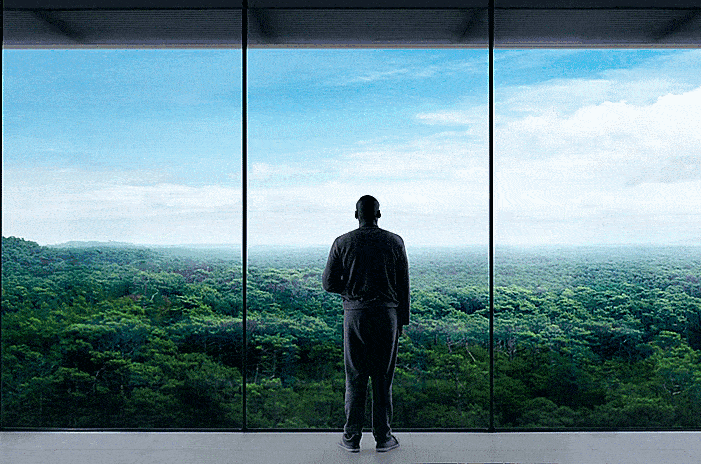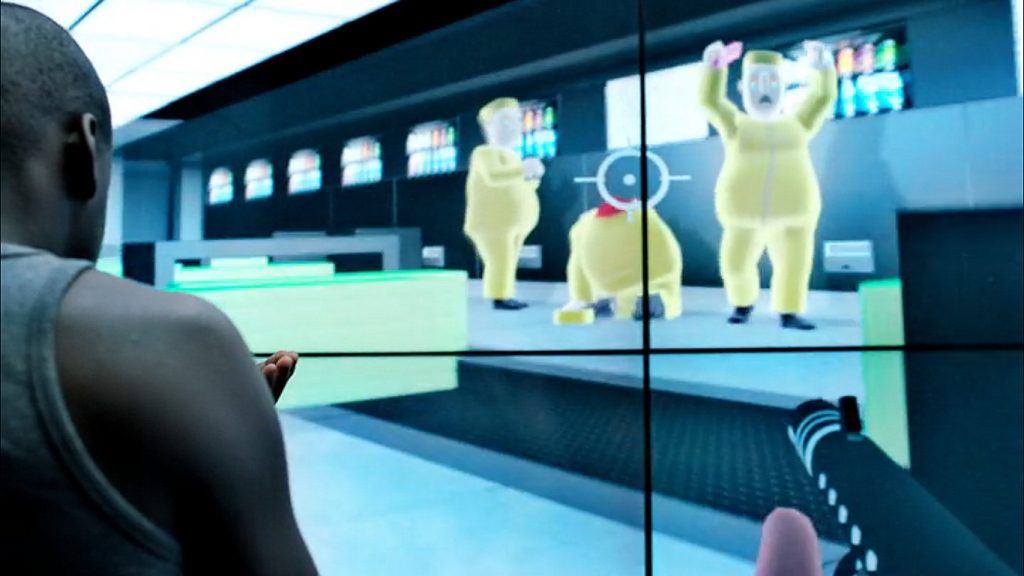“Black Mirror“ is a popular fiction and psychological Netflix serie, that counts with five seasons with around three independent episodes each of them. We could say that all the popularity that this serie has is mostly because of its explicit content and its message, as it shows speculative dark fiction, from the darkest human instincts to the greatest new technologies, analyzing modern society.
Personally, I love series that messes up with my mind and explores our reactions and thoughts, so that when you end an episode you spend some time to recompose and to rethink about what you just watched, and this one is one of them.
“15 millions of merits” is one of its episodes, specifically the episode number two from the first season. I could talk for hours about all the episodes of this serie, but I chose this one because of its futuristic vision represented mainly in the environment and functions.

The main topics that this episode represents are the importance and need of money, and the pressure and obsession of the social status, also criticizing the humiliation of the participants of entertaining TV shows.
WHAT IS IT ABOUT?
The population lives in tiny colorless cubicle-cells with a futuristic structure and new technologies installed, which happens to be their room, and repetitive servitude. The whole system works by “merits”, being something similar to our money. Everything they want to buy, see, or get, has to be paid with them, even to skip commercials. This merits are earned by doing the activities that allows them the gym, as for example the mechanical bike, that produces power through the person’s efforts, and they get paid for that.

There are other spaces that we see in the serie and in which the people is allowed to be.
These all have the same aesthetic as their rooms, and includes a gym, where they can do sport to earn “merits”, and the dining room, where they only can eat buying low quality food with their same “merits”.
Almost everything in their lives is virtual, from the food they get from vending machines, to the interactions between each other that tends to be through their Dopples (virtual character).
The people hardly speak between them, and spend their free time alone in their small cells with their screens.
THEIR ROOMS
The characters live in small cubic rooms, in which the only color we are able to see is white, that give a futuristic atmosphere to them. Watching them from a general vision, they are are a white cube with only one furniture piece: the bed.
This rooms may seem simple, but they have multiple screams incorporated to their walls, floor and roof, so then it could be described as a TV room. This function opens them a whole world of new possibilities and totally reduces their mobility, due to the fact that they can still watch the screen from their bed without moving their neck, as the images adjust to the position of their vision.
In my opinion, this interesting factor is one of the multiple ones that the future architecture will offer, as it seems that the new technologies allows having less efforts in out actions and activities, even if they are minimum. This episodes shows an extreme side of this, however, I still think the screens will form a big part of future’s architecture.
This screen innovation allows them to recreate any environment they want. They can control their room with only some finger movements, that will give them options from being in a Caribbean island to playing a fighting video game.
Personally, I find this system and structure claustrophobic and scary. Even if the screen system gives you a thousand more activities and experiences than what we have in real life I would totally hate this virtual and superficial life, surrounded by monochromatic walls and non-real elements.
BIBLIOGRAPHY
https://psicologiaymente.com/cultura/black-mirror-serie-psicologica
https://filmschoolrejects.com/black-mirror-15-million-merits/










